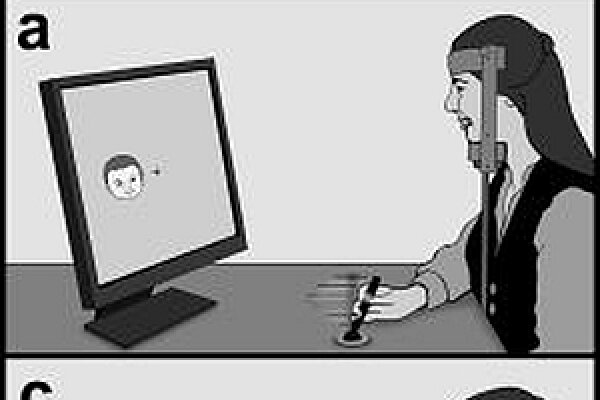2011-05-10

Possibly emotions are just a means to coordinate fast actions to stimuli that have a valence character. In the present study biological psychologists from Bochum and Würzburg planned to test if the left hemisphere preferentially controls flexion responses toward positive stimuli, while the right hemisphere is specialized toward extensor responses to negative pictures. To this end, right-handed subjects had to pull or push a joystick subsequent to seeing a positive or a negative stimulus in their left or right visual hemifield. Flexion responses were faster for positive stimuli (upper picture), while negative stimuli were associated with faster extensions responses (lower picture). Overall, performance was fastest when emotional stimuli were presented to the left visual hemifield. This right hemisphere superiority was especially clear for negative stimuli, while reaction times toward positive pictures showed no hemispheric difference. Thus, flexion and extension are indeed tightly linked to the valence of the stimulus. But the division of valence between hemispheres is not as clear. This fits to recent developments that an approach reaction (in this case visible as a flexion response) can be elicited by positive emotions as well as by anger, which is a negative emotion.

Possibly emotions are just a means to coordinate fast actions to stimuli that have a valence character. In the present study biological psychologists from Bochum and Würzburg planned to test if the left hemisphere preferentially controls flexion responses toward positive stimuli, while the right hemisphere is specialized toward extensor responses to negative pictures. To this end, right-handed subjects had to pull or push a joystick subsequent to seeing a positive or a negative stimulus in their left or right visual hemifield. Flexion responses were faster for positive stimuli (upper picture), while negative stimuli were associated with faster extensions responses (lower picture). Overall, performance was fastest when emotional stimuli were presented to the left visual hemifield. This right hemisphere superiority was especially clear for negative stimuli, while reaction times toward positive pictures showed no hemispheric difference. Thus, flexion and extension are indeed tightly linked to the valence of the stimulus. But the division of valence between hemispheres is not as clear. This fits to recent developments that an approach reaction (in this case visible as a flexion response) can be elicited by positive emotions as well as by anger, which is a negative emotion.